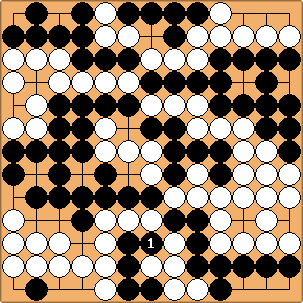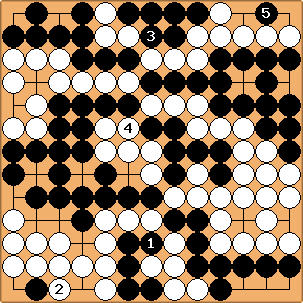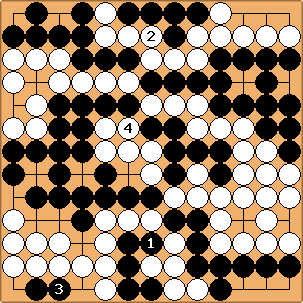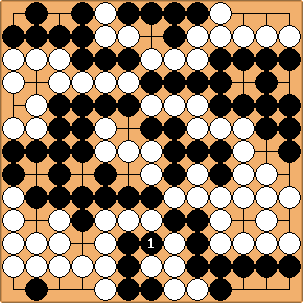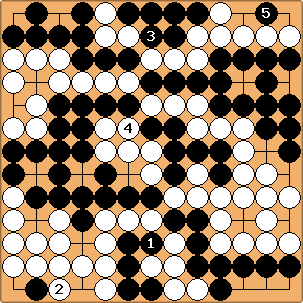A sensible definition of a move being sente is when, to get the best result, it has to be answered directly to counter the threat of that move. Let's look at the position below to illustrate this issue.
In diagram 1 Black played at the bottom, the best move here. The question is: is this move sente, is the best White can do, defend its group at the bottom left?
If White defends, Diagram 2 shows the best sequence for both. The players' gain per move is resp. B-13 (the captured stones at the bottom and the territory of the now safe group at the bottom right), W-4 (the territory of the now safe group at the bottom left), B-6 (the captured stones at the top), W-14 (the captured stones at the centre) and B-20 (the killed group at the top right). Thus Black has gained 39 points, White 18 points, the net result is 21 points for Black.
If White decides to play at the top instead, the best alternative when playing tenuki, Diagram 3 shows the best sequence for both. The players' gain per move is resp. B-13 (the captured stones at the bottom and the territory of the now safe group at the bottom right), W-13 (the captured stones at the top and the territory of the now safe group at the top right), B-34 (the killed group at the bottom left) and W-14 (the captured stones at the centre). Thus Black has gained 47 points, White 27 points, the net result is 20 points for Black. This result is 1 point better for White than Diagram 2, so in this position Black 1 is no sente move. Quite remarkable when considering the size of the group at the bottom left.
By increasing the size of the group at the bottom left slightly, the situation changes.
In diagram 4 again the question is: is Black's move sente, is the best White can do, defend its group at the bottom left?
If White defends, Diagram 5 shows the best sequence for both. The players' gain per move and the subsequent result are the same as in Diagram 2: Black has gained 39 points, White 18 points, the net result is 21 points for Black.
If White decides to play at the top instead, the best alternative when playing tenuki, Diagram 6 shows the best sequence for both. The players' gain per move and the subsequent result differ from Diagram 3 only about the kill at the bottom left, that is 36 points in Diagram 6 and 34 points in Diagram 3. Black has gained 49 points, White 27 points, the net result is 22 points for Black. This result is 1 point worse for White than Diagram 5, so in this position Black 1 is a sente move.
Conclusion
I guess there is no easy answer to the question whether a move is sente or not. Apparently, this depends on the situation on the whole board. Because of this, one might wonder whether the concept of sente is a useful one, whether the issue really shouldn't be to find the biggest move on the board. This notion, that the best move may be everywhere on the board, should be thoroughly understood if one really wants to improve at go.
An interesting example these modern days is the concept of joseki. One might wonder: is every move in a joseki really sente, is it best to answer everyone of them, considering the whole board? Looking at the games of AlphaGo and the young top professionals, one regularly sees that a joseki as we know it is not finished, a tenuki move being played instead halfway. And we don't see some long, complicated joseki anymore: are these just out of fashion, or is there the notion that sometimes it is better to answer a good move with a decent follow-up by a good move with a decent follow-up elsewhere?
Kind regards,
Paul

